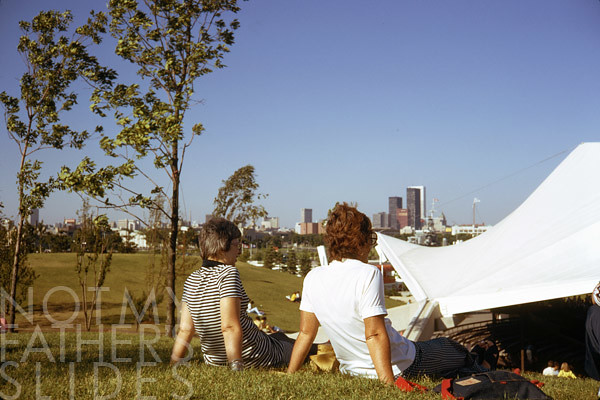

The following is a reprint of my recent psychogeography column in Eye Weekly looking at the future of Ontario Place. The photos included in this post are from Not My Father’s Slides, Tanja Tiziana’s wonderful project that rescues abandoned Kodachrome slides she finds at estate and yard sales. The pictures used here, of an unknown family, are dated to July 1973. They are very much like the golden-hued ones I write about below. Happy days at Toronto’s happy day machine. Check out Tanja’s site when you’re done reading.
In one of the photo albums I grew up with, one that contained snapshots of my parents’ lives before I was born, there were a handful of pics taken in 1971 at Ontario Place, the year it opened. They’ve all got the golden tint that photos from that era have acquired — the troubles of the day seem far away as everything is muted by that gilded patina. One that always stood out is of a polyester-clad choir singing what I imagine is the old Expo ’67 Ontario anthem “A Place to Stand.” It all looked so optimistic and young, the brilliant future of Ontario and Canada.
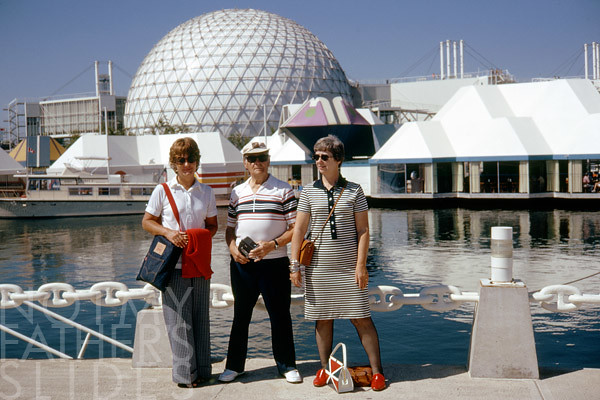
The future is old now — nearly 40 years old — and it’s easy to drift into nostalgia about a place like Ontario Place, one of those civic spaces that are nostalgia machines. Everybody of a certain not-too-old age has a memory of either romping or working around here or heard stories passed down from a baby-boomer parent of working here in the early 1970s.
Yet as the Ontario government — it doesn’t seem like it, but this is a public space — is planning a major redevelopment of the area, this is no time for nostalgia. Some of the best buildings in Toronto are at risk of being swept away because the bureaucrats in charge have let Ontario Place slide into irrelevance. No offence to bureaucrats intended, but they may not be good at running things that are, well, supposed to be fun. Anybody who’s visited Ontario Place in the past decade or more knows it needs a major overhaul. It’s boring, neglected and tired. The future isn’t what it once was.
When it opened in 1971, it was Ontario’s $29 million answer to Montreal’s Expo ’67, if not in terms of civic pride then in dreams of waterfront and economic stimulus (a Toronto theme that never seems to go away). Designed by Toronto’s Eberhard Zeidler, it was constructed on fill dumped into Lake Ontario off the CNE shore, including three old lake freighters that were sunk and filled with sand to act as anchors for the landfill. The five pods that were suspended over the lake are like nothing else in the world, and the Cinesphere had the world’s first permanent IMAX theatre. For those who like to fret about Toronto’s world-class-ness, we’ve got some beauties right here. Once housing exhibits, the pods are only used for wedding and event rentals now. With floor-to-ceiling glass, they have some of the best views of Toronto, and few people get to see them.
Like Expo ’67, its opening brought with it a kind of Trudeaumaniacal excitement. If Expo let Canada be sexy, Ontario Place said this historically uptight province could be too. Ads from that first year proclaimed the glories of “The Girls of Ontario Place” claiming “There’s a lot to see at Ontario Place, and some of the easiest things on the eye are the attractive guides.” The Globe and Mail even did a photo spread of said girls, writing, “The 100 girls who are the hostesses at Ontario Place for the summer… have hot pants and pantsuits, a midi, a jacket and a stretchy yellow-and-white bubble blouse. Most popular are the hot pants. One girl commented ‘I’ve just got to shorten them.’”
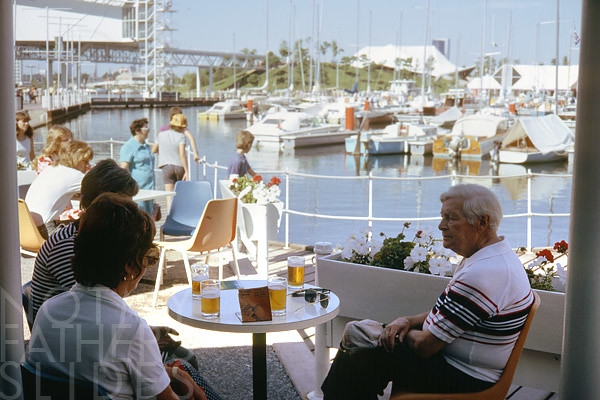
Today, Ontario Place could use more hot pants. The uniforms (on both sexes) are frumpy and oversized now (though perhaps on account of the deep-fried foods that are served in huge portions — even the coffee bar is called a “fill station”). On a recent trip there, I spent over $15 just to enter the grounds for a walk that included few free attractions and a lot of either rundown or neglected buildings. On the east side, where the beloved children’s village once was, a dead, mostly paved space called “South Beach” is located near the waterslide park. The other older bits that have survived here and there are unloved, and the newer games and attractions seem temporary, as if part of the CNE.
Ontario Place was never a money-maker, and there are newspaper stories over the decades lamenting this. The only part that is a really profitable is the Molson Canadian Amphitheatre, though it came at the cost of losing the Forum, an intimate outdoor concert venue in-the-round (the circular stage even rotated) with open seating under a tent-like roof and grassy areas. Baryshnikov danced here, many Torontonians saw their first symphony on that stage, and in 1980, after 1,000 fans of Teenage Head rioted for four hours when they were turned away from the sold-out show, “rock” concerts were banned for some time. The parklike forum has been replaced by high-security amphitheatre with gloved paramilitary-looking security people. The open stage over at Harbourfront has taken on the easy-come-easy-go role of the Forum, but without its bucolic, nearly forest setting.
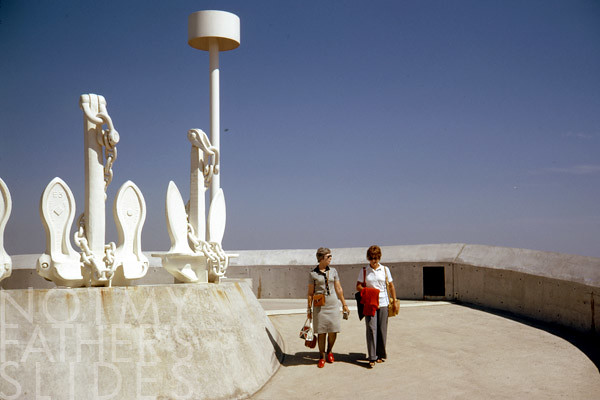
When the Forum was torn down in 1994 and chainsaws were taken to over 400 mature trees, architect Zeidler told the Toronto Star, “Once the park image has gone… it’s Coney Island.” Zeidler’s original design was much more parklike than Expo ’67, as exhibits were a small part of the experience, as he said in 1974: “[It] wasn’t like Expo… the key was to create leisure time, space within an urban context and the spaces for exhibitions themselves become only one of many developments.” Last month, when talk of redevelopment went public, he said what happened to Ontario Place is like “a fantastic Jaguar, and you run it into a ditch.”
Ontario Place needs a near-complete rethink. We should bring back the park, make it free and turn it into a great Toronto public space. Build housing in and around it, so it’s a 24-hour neighbourhood, not just alive during the summer daylight hours. As dense communities are growing in nearby Liberty Village and Fort York, putting people in Ontario Place would nearly surround the CNE with life.
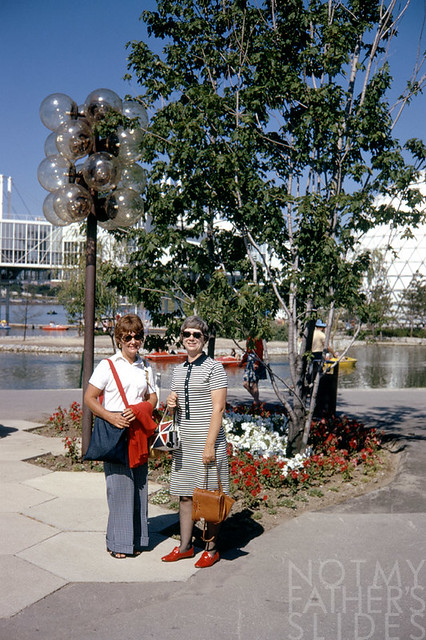
Yet whatever we do with this place, we must retain the hot-pants parts: the pods and sphere. Modernist buildings at this age are at greatest risk. Like awkward teenagers, they are unloved and are routinely disrespected, but parents don’t disown them; they know they’ll come around in a few years. Also at risk is a particular Toronto look that Zeidler gave us at Ontario Place and at his Eaton Centre, itself about to get a $120-million renovation which will likely remove many of the 1970s “futuristic” Space Shuttle–era details. Because of the age of both these places, and their connections to fun times, it’s easy to dismiss our built heritage as nostalgia.
But as Jane Jacobs said, new ideas need old buildings, and these buildings are now old, just like now-loved Victorian architecture was when she wrote those words. It’s time to do new things with these fine buildings.


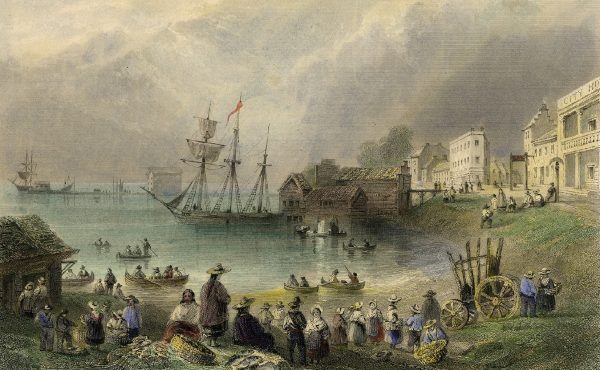

8 comments
Re: the picture titled “Pants!” – I had that exact view last week. Right down to the boats, it looks just about the same.
I completely agree with the need for housing in and around the CNE and ontario place. The parklands there are pretty incredible, but there’s nothing really there to attract anyone. As density is developed in Toronto, we should definitely focus on a thoughtful inhabitation of this space…full of potential.
I worked at Ontario Place Marina a decade ago. And nothing had changed from the photos taken in the 1970s
I’ve always felt that OP tried to do too much, and ended up spread so thin that it didn’t do anything properly. It was a Marina/amphitheatre/IMAX theatre/water park/WWII museum (HMCS Haida).
At the time, I thought that they should look to the lake, and rebuild/rebrand themselves as a water park, add a beach, build some place where you can get a drink and not stare at the Marina. Keep the dome and the pods, but they’d be separate attractions like the Amphitheatre.
I don’t know about housing south of Lake Shore. As a previous post said, it’s hard to walk to the lakeshore. It’s equally hard to walk away from the lakeshore. There are no stores, no services, and it gets plenty windy and miserable in winter.
With housing should come a complete neighbourhood. Services, stores, bars. Etc.
The building of the Molson Shed was the final nail in the coffin.It ruined the island feel and cut off the CNE from the south side of OP. I was there when OP opened and it was cool in a 70’s Toronto uptight way but we rarely went into the buildings or hung at the marina it was really the Forum, the park, and the Cinesphere that attracted us. The last time I was inside OP’s pods was for the 1984 New Media (yes we had New media then too) Festival. After that it seemed that the pods and the marina had one failed restaurant after another. Its too bad that the Forum is gone as it was an intimate and relaxing venue that could hold almost any kind of show. I am proud to have worked the last show which was the Kumbaya Festival to fight AIDS. As we left the bulldozers waited to rip up trees under the cover of night and we all knew that the OP we loved was over.
Unless the pods can be used for something that has broad appeal and is free then the whole thing should be turned into a park to add to the green space of the city and promote healthy activities.
Making entry free and improving connections to the surrounding area would do a lot. When I used to go to Ontario Place in my younger days, my mind always put it into the same category as Canada’s Wonderland – you drive there park in a big lot, pay for parking, pay for admission and pay high prices for mediocre food. When you get in there you are looking for some super-duper rides or other serious stuff to do, but the payoff is just not there. And the pods never had much of interest either – it just felt like you were away from the action. (Though I always looked forward to the children’s village and bouncing around in the big coloured heavy bags).
If you make admission free, then all of the sudden it’s more like a public park. I can take my kids, walk around and if there is a special attraction, I’ll pay for that. If people are wandering around a lot, it may make it more feasible for smaller businesses to locate in the pods, or for developers to find uses for other pieces of land and you can make up the money there. I also like the idea of using it for a school.
It’s important to remember that the main reason Jane Jacobs noted that new ideas need old buildings was the low cost. It is low rent that attracts artists and entrepreneurs and gives the opportunity for trial and error, for some ideas to succeed and others to flame out. If the pods are cheap enough and you have lots citizens wandering around (because of free admission to the grounds) you will have no trouble finding interesting people to locate in those buildings.